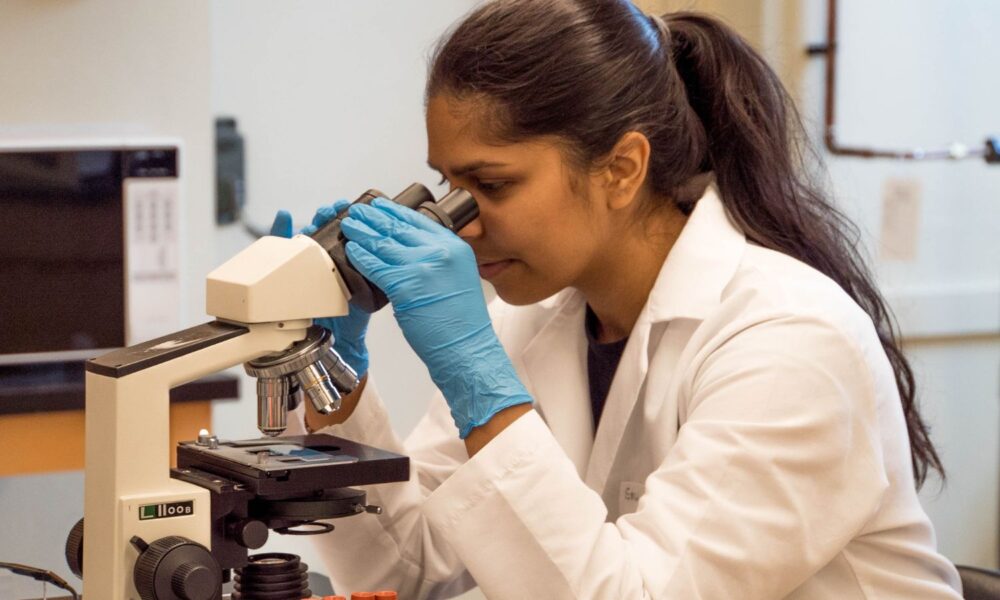The Center for Science and Democracy’s new report, Strengthening and Diversifying the Federal STEM Workforce, is out this week. One of its most potent recommendations is that federal agencies can diversify their workforces to bring in young, talented scientists from historically marginalized communities by developing partnerships with universities that have a large, diverse student bodies and strong programs in science, technology, engineering, or medicine (STEM) fields. Our analysis found that a number of federal agencies are reporting some promising first steps to develop these types of partnerships. However, our data suggests that currently there is a surprising dearth of federal scientists coming from minority-serving institutions (MSIs).
Minority-serving institutions represent one-fifth of the nation’s STEM undergraduates
Harkening back to the Higher Education Act of 1965, the MSI term refers to institutions of higher education that serve Black, Indigenous, people of color (BIPOC) populations. These are institutions that integrate considerations of equity and diversity into their mission statements and day-to-day operations. They offer access to higher education for students who may not otherwise have had it, and they set an example by employing more BIPOC faculty and university staff than are seen at predominantly white institutions.
MSIs remain some of nation’s leaders in producing BIPOC graduates with STEM degrees. For instance, 30 percent of Black Americans majoring in STEM fields graduate from a historically Black college or university (HBCU). A 2019 report by the National Academies of Sciences, Engineering, and Medicine points out that nearly 700 MSIs provide pathways for a STEM education, that MSIs produce one-fifth of the nation’s STEM bachelor’s degrees, and that more undergraduate students are enrolled in STEM fields at four-year MSIs than at four-year institutions not classified as MSIs.
Agencies need to recruit more federal scientists with MSI degrees
This summer, Taylor Thomas, a talented graduate student, joined our efforts at CSD. Thomas was deeply interested in this subject and researched how many federal scientists had previously attended a MSI. As far as we are aware, this is the first time anyone conducted this type of analysis.
We had already compiled a list of the names and job titles of federal scientists for our federal scientist survey project. Thomas used this data to match 500 randomly selected federal scientists to their online LinkedIn profiles and then classified whether or not the highest degree they earned came from a MSI (as determined by the classification system developed by the Department of Education). For this analysis, we focused on three types of MSIs: historically Black colleges and universities (HBCUs), Hispanic-serving institutions, and tribal colleges and universities. None of the federal scientists we looked at attended tribal colleges and universities for their terminal degree.
The results are very stark, as you can see below (Figure 1). Out of the five federal agencies Thomas examined – the Centers for Disease Control and Prevention (CDC), the Environmental Protection Agency (EPA), the Food and Drug Administration (FDA), the Fish and Wildlife Service (FWS), and the National Oceanic and Atmospheric Administration (NOAA) – the vast majority of scientists at each agency (89 to 96 percent) obtained their highest-level degree from a university that is not considered an MSI by the Department of Education. While we understand that this data analysis has its caveats – for instance, we could not identify whether the university information reported on LinkedIn profiles was accurate or up-to-date– it does provide a glimpse into federal agencies’ track record in employing MSI STEM graduates. The findings suggest that there is a lot more work agencies need to do to attract these brilliant and often diverse STEM professionals into the federal workforce.
Figure 1: Type of Institution from Which Federal Scientists Received their Highest Degree

Agencies need to go further with their MSI partnerships
After President Biden issued an executive order requiring that agencies increase their efforts to diversify the federal workforce, federal agencies have been active in strengthening prior partnerships or forging new partnerships with MSIs. For instance, the Department of Defense established a new research center at Howard University (an HBCU in Washington, DC); the EPA established an internal council to identity opportunities to partner with HBCUs; the National Nuclear Security Administration established a partnership program with MSIs; and several federal agencies announced funding opportunities for MSIs, including the Department of Energy, NASA, and NOAA.
Honestly, this is great news, and we at the Union of Concerned Scientists celebrate that these agencies are taking concrete steps to partner with MSIs. But our data shows that scientists who graduated from MSIs are woefully underrepresented in the federal workforce, and therefore federal agencies are currently missing the unique perspectives and insights this group of scientists can bring.
We urge federal agencies to think through evidence-based approaches for attracting the best and brightest minds from MSIs into the federal STEM workforce. Our report offers a veritable cornucopia of best practices for hiring and retaining a more diverse STEM workforce, including a set of recommendations written by five distinguished experts with backgrounds as current and former federal scientists, individuals from academic institutions, and nonprofit experts. Given the critical role that federal scientists play to inform government decisions that impact the health and safety of all residents’ lives, we will all benefit as our federal agencies step up their efforts further to build a stronger and more diverse STEM workforce.

